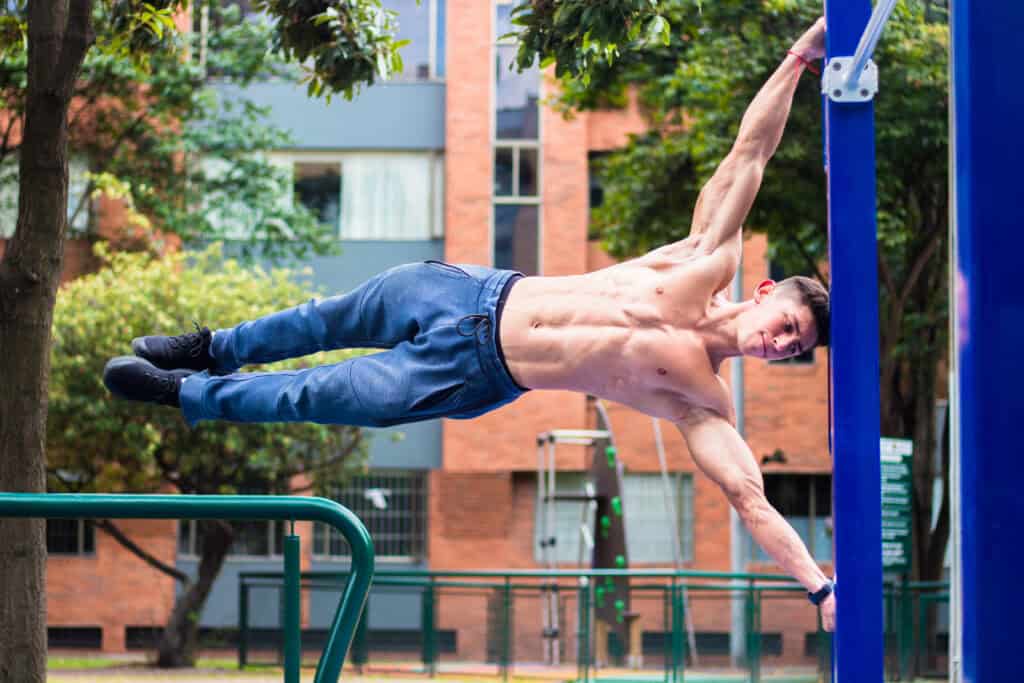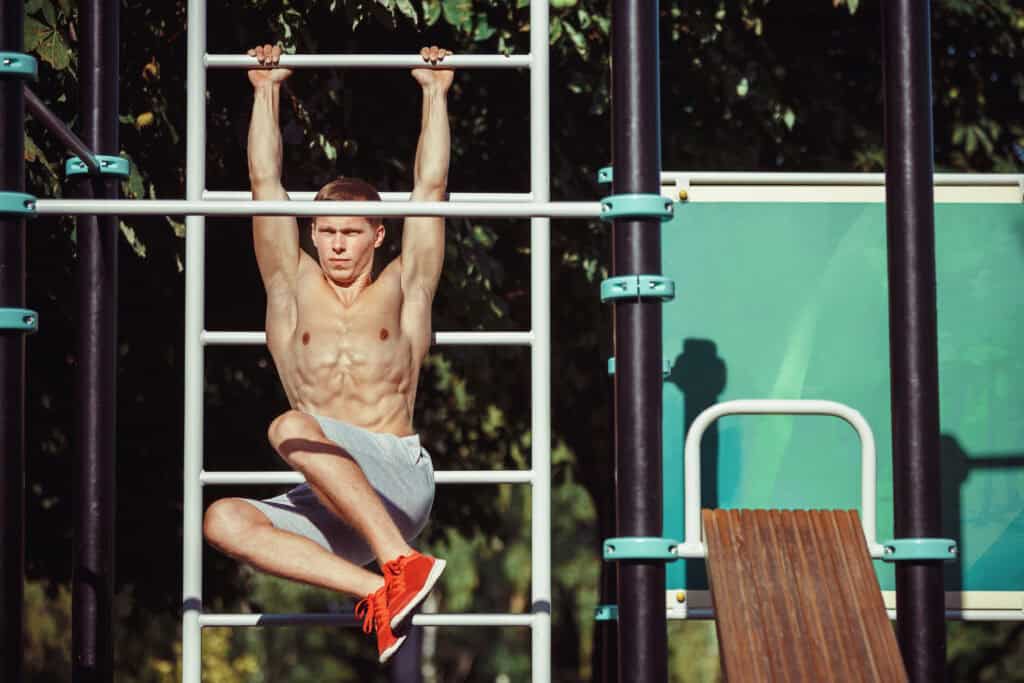A strong core is essential for overall fitness, stability, and injury prevention. Whether you’re an athlete or just someone looking to improve their physical health, developing a solid core is key. But with so many exercises to choose from, it can be challenging to determine which movements are the most effective. In this article, we will explore the best core-strengthening exercises, supported by scientific research, and discuss whether static exercises like planks, rotational movements like Russian twists, traditional crunches, or hanging ab exercises are the most effective.
Understanding Core Muscles and Their Function
The core is more than just your abs; it includes the muscles in your lower back, pelvis, hips, and abdomen. These muscles work together to stabilize your spine, support your movements, and maintain your balance. Core strength is crucial for daily activities, sports performance, and injury prevention. Weak core muscles can lead to poor posture, lower back pain, and an increased risk of injuries.
Static Core Exercises: Planks and Their Variations
Planks are among the most popular static core exercises. They engage multiple core muscles, including the rectus abdominis, transverse abdominis, obliques, and the muscles of the lower back. Unlike dynamic exercises, planks involve holding a position for an extended period, which can lead to significant improvements in core stability.
A study published in the Journal of Strength and Conditioning Research found that planks are highly effective at activating the transverse abdominis, a deep core muscle crucial for spinal stability. The study also noted that variations such as side planks and plank with leg lifts can further enhance core activation by engaging additional muscle groups, including the obliques and glutes.
While planks are excellent for building endurance in core muscles, they primarily focus on static strength. To develop a well-rounded core, it’s important to include exercises that involve movement and engage the core muscles in different ways.
Rotational Movements: Russian Twists, Bridges, and Side Bridges
Rotational movements are essential for functional fitness because they mimic the twisting motions we use in daily life and sports. Exercises like Russian twists, bridges, and side bridges target the oblique muscles, which are responsible for rotational stability and movement.
A study in the European Journal of Applied Physiology examined the effectiveness of Russian twists and found that they significantly activate the oblique muscles, making them a valuable addition to any core workout routine . The researchers also noted that performing Russian twists with added resistance, such as a medicine ball or dumbbell, can increase muscle activation and strength gains.
Bridges and side bridges are other effective rotational exercises that engage the core muscles. According to research published in the Journal of Orthopaedic & Sports Physical Therapy, bridges, particularly the glute bridge, activate the glutes and lower back muscles, which play a crucial role in maintaining core stability . Side bridges, on the other hand, primarily target the obliques and quadratus lumborum, contributing to lateral core strength.
Incorporating rotational movements into your core routine can help improve functional strength, making everyday activities and sports movements more efficient and reducing the risk of injury.
Traditional Core Exercises: Crunches and Their Efficacy
Crunches have long been a staple in core training routines, but how effective are they compared to other exercises? While crunches target the rectus abdominis, they may not be the most efficient exercise for overall core strength.
A study published in the Journal of Electromyography and Kinesiology compared muscle activation during various core exercises and found that crunches primarily engage the rectus abdominis, with minimal activation of other core muscles . While crunches can help build abdominal strength and definition, they do not provide the same level of overall core activation as exercises like planks or rotational movements.
Additionally, performing crunches with poor form can place excessive strain on the neck and lower back, leading to discomfort or injury. To maximize core strength and reduce the risk of injury, it’s essential to incorporate a variety of exercises that target all core muscles, rather than relying solely on crunches.
Hanging Ab Exercises: Leg and Knee Raises
Hanging ab exercises, such as leg raises and knee raises performed on a captain’s chair machine, are highly effective for strengthening the lower abs and hip flexors. These exercises involve lifting the legs while hanging from a bar or supporting your body on a captain’s chair, which requires significant core stability and control.
A study in the Journal of Human Kinetics examined the muscle activation during hanging leg raises and found that they elicit strong activation of the rectus abdominis, particularly the lower portion, as well as the hip flexors. The study also noted that hanging leg raises engage the obliques and the transverse abdominis, making them a comprehensive core exercise.
Knee raises are a modified version of leg raises and are often recommended for beginners or those with limited hip flexibility. While they may not activate the lower abs as intensely as leg raises, they still provide significant core engagement and can be a useful exercise for building foundational strength.
Hanging ab exercises are particularly beneficial because they require core stability and control throughout the movement, making them more functional and effective for overall core strength compared to traditional crunches.

Conclusion: The Best Core Strengthening Exercises
When it comes to strengthening the core, no single exercise is superior in all aspects. Instead, a combination of static, rotational, and dynamic exercises is the most effective approach. Planks and their variations are excellent for building static core stability, while rotational movements like Russian twists improve functional strength and rotational stability. Traditional crunches can help target the rectus abdominis but should not be relied upon as the sole core exercise. Finally, hanging ab exercises like leg and knee raises are highly effective for engaging the lower aspect of the abs and hip flexors, providing a comprehensive core workout.
Incorporating a variety of core exercises into your routine will ensure that you target all the muscles in your core, leading to improved strength, stability, and overall fitness. Whether you’re an athlete or just looking to enhance your physical health, these exercises, supported by scientific research, will help you build a strong and resilient core.
By including a mix of static, rotational, and dynamic core exercises in your training, you can achieve a well-rounded and effective core workout that supports your fitness goals and enhances your overall performance.
References
Planks and Core Stability:
Ekstrom, R. A., Donatelli, R. A., & Carp, K. C. (2007). Electromyographic analysis of core trunk, hip, and thigh muscles during 9 rehabilitation exercises. Journal of Orthopaedic & Sports Physical Therapy, 37(12), 754-762. doi:10.2519/jospt.2007.2471
Rotational Movements and Oblique Activation:
McGill, S. M., & Karpowicz, A. (2009). Exercises for spine stabilization: Motion/motor patterns, stability progressions, and clinical technique. Archives of Physical Medicine and Rehabilitation, 90(1), 118-126. doi:10.1016/j.apmr.2008.06.015
Bridges and Side Bridges:
Czaprowski, D., Afeltowicz, A., Gebicka, A., Pawłowska, P., & Kędra, A. (2013). Abdominal muscle EMG-activity during bridge exercises on stable and unstable surfaces. Journal of Electromyography and Kinesiology, 23(4), 758-763. doi:10.1016/j.jelekin.2013.02.006
Crunches and Muscle Activation:
Juker, D., McGill, S., Kropf, P., & Steffen, T. (1998). Quantitative intramuscular myoelectric activity of lumbar portions of psoas and the abdominal wall during a wide variety of tasks. Medicine and Science in Sports and Exercise, 30(2), 301-310. doi:10.1097/00005768-199802000-00016
Hanging Leg Raises and Core Activation:
Scholl, E., & Davies, G. J. (2012). Electromyographic analysis of selected core and hip muscles during hanging and floor-based knee and leg-raise exercises. Journal of Strength and Conditioning Research, 26(10), 2936-2941. doi:10.1519/JSC.0b013e318247437f
Stay Strong Together
For those looking to enhance their fitness journey, the award-winning Jefit app is an invaluable tool. Jefit offers personalized workout plans, extensive exercise libraries, and progress tracking features to help you reach your health goals. Whether you’re focusing on your carb intake, aiming to build muscle, or seeking to improve overall fitness, Jefit provides the resources and support needed for success. Join millions of users worldwide who have transformed their lives with Jefit, and take control of your health and fitness today.
- The New Rules of Strength Training in 2026 - December 24, 2025
- Fibermaxxing: Viral Nutrition Trend You Should Know - December 17, 2025
- Hybrid Metabolic Strength Training for Faster Results - December 10, 2025
